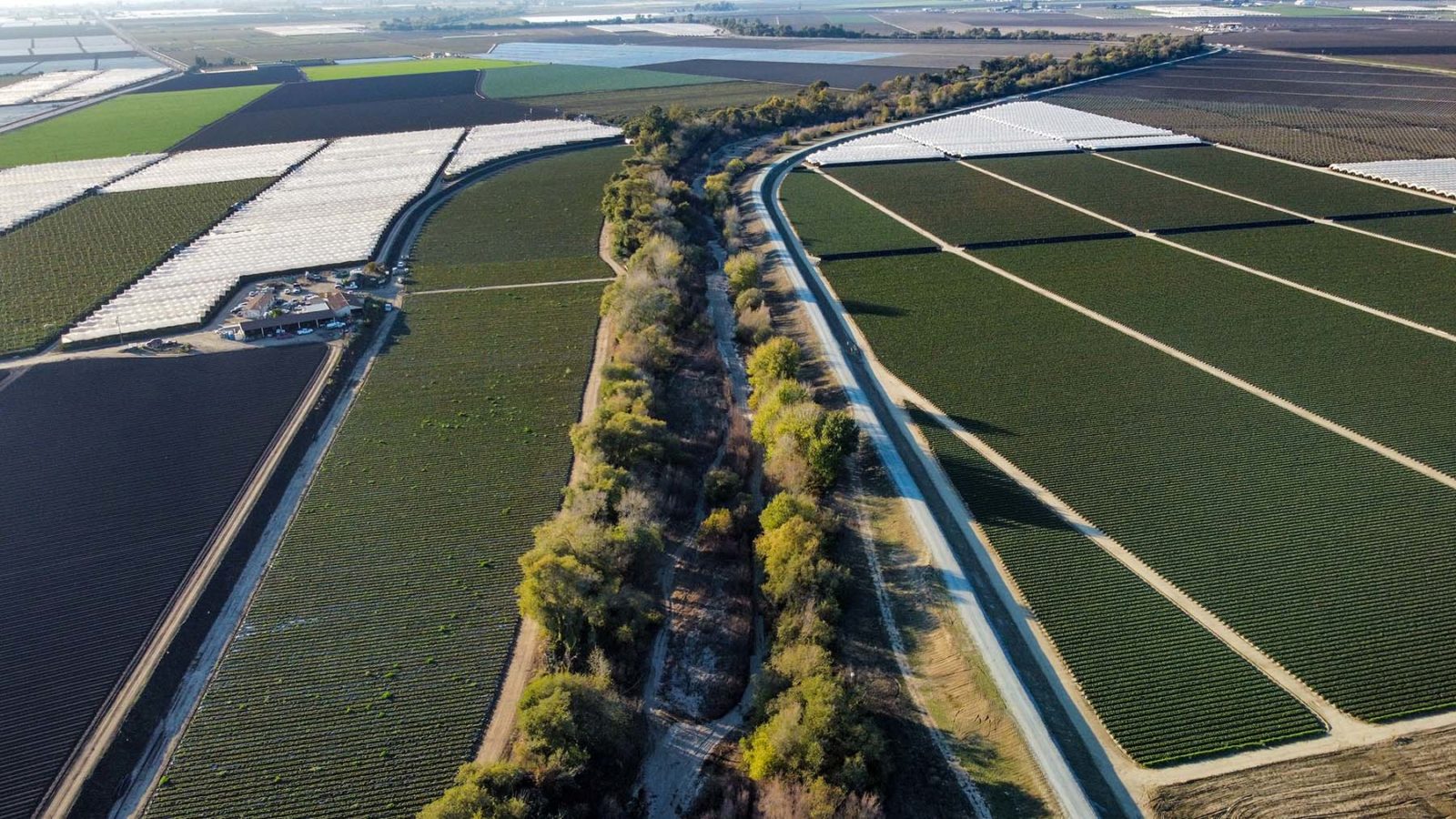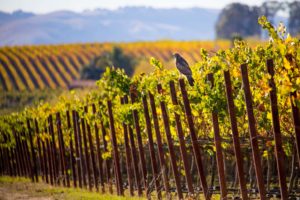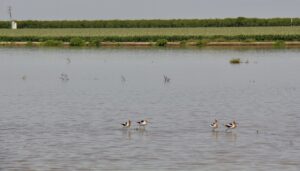The Pajaro River slithers between the towns of Pajaro and Watsonville, which lie directly within the river’s natural floodplain. Although the river created the fertile soils that birthed this agricultural community, its floodwaters can wreak havoc on the region: a 1995 flood killed two people and destroyed $95 million worth of agricultural crops.
Levee managers fight a constant battle with gopher and ground squirrel burrows, which weaken the dirt embankments that line the river to protect the region from floodwaters. Most levee protection involves poisoning the animals, but the toxin-laden rodents become deadly treats for predators. The poison cripples or kills bobcats, coyotes, and birds of prey, causing widespread animal suffering and reducing the population of carnivores needed to naturally keep rodents in check.
Now, researchers and levee managers are testing whether simply attracting hawks and owls can keep rodent numbers down while supporting native wildlife. The program is inspiring other Bay Area municipalities like the city of Santa Cruz to explore wildlife-friendly levee management.
In 2019, levee managers for the Pajaro River learned that their counterparts in Ventura County had replaced rodenticide pest control with owl boxes and hawk perches along a stretch of the Revolon Slough levee, yielding intriguing results. The raptors were not only more effective at controlling rodents, but they also saved the flood control agency more than $7,500 per mile of levee.
“It just kind of seemed like a no-brainer for me. It seemed like a cool and responsible way to do our work, and if we can get enough birds out there, then they’re working full time,” says Rusty Barker, a civil engineer with the Santa Cruz County Zone 7 Flood Control and Water Conservation District.

On the Santa Cruz County side of the Pajaro River, Barker’s team had already replaced rodenticides with carbon monoxide fumigation. Although this method eliminates the ecological consequences of poisons by suffocating the rodents in their burrows, it also kills non-target species like salamanders and frogs that use the burrows for refuge. The more successful the raptors are at controlling the rodents, the less that maintenance needs to resort to fumigation.
Barker approached his college friend Zeka Glucs, director of the Predatory Bird Research Group at UC Santa Cruz, to see if they could team up and test the natural predator method for the Pajaro River.
“This part of the county is very rich in birds, and raptors specifically,” Glucs says. “It’s just about whether we can focus them in on this versus everything else.”
Glucs and her students installed wooden nest boxes for barn owls, which are voracious gopher predators. They also set up high perches where red-tailed hawks and great-horned owls can lord over the land and use their laser-focus eyesight to spot larger rodents like ground squirrels. Attracting different raptor species according to their favored prey is important, because although gophers are most common, ground squirrel burrows are so extensive that they can cut clear through the levee. One behemoth ground squirrel burrow found in San Luis Obispo County stretched over 700 feet long and displaced 5 tons of soil.

The human-made perches and nesting boxes create a vertical habitat typically provided by trees, but without the danger of trees uprooting during floods and bringing swathes of levee with them. This is why the levees are intentionally kept clear of vegetation, Barker says, creating an imbalanced ecosystem where rodents can thrive without the watchful eyes of birds of prey to keep them in check.
The researchers visited the levee site to survey for rodent burrows and raptors through the pandemic. By collecting and dissecting owl pellets (bits of fur and bone coughed up by the birds), they were able to identify which species the owls were devouring. Barn owls returned to nest in the boxes each season, with three successful nests in 2021. Each nesting pair preys on thousands of rodents to feed their growing family.
In addition to the success in bringing nesting owls to the site, Glucs and her team found fewer rodent burrows along the 2.5-mile stretch of levee with the raptor perches and owl boxes. The effort has also caught on. The Santa Cruz Water Department is working with Glucs to explore bringing the study to the San Lorenzo River in 2022, and Barker is working to expand the project to the Pajaro River’s opposite bank, which is managed by Monterey County.
“There’s definitely a lot of interest in our community about integrated pest management,” Glucs says. “And it’s something I really care about, because rodenticide use is really like the DDT of our time.”

Raptors suffering from suspected poisoning rarely recover, says Amy Redfeather, a wildlife rehabilitator at Native Animal Rescue in Santa Cruz. Although the rescue center has seen a decline in poisoned animals this year, they’ve still treated more than a dozen raptors with symptoms of poisoning.
“No matter what we do — vitamin K, charcoal, fluids — no matter what we do, they end up dying,” says Redfeather.
Anticoagulant rodenticides work by preventing blood clotting, and second-generation products are particularly potent: they work slowly, allowing a rodent to consume concentrations far above a lethal dose before perishing. The poison then persists in the dead animals for months and passes up the food chain to anything that eats them.
Although the state Legislature restricted household use of second-generation poisons in 2014, they continued to be used by commercial operators and licensed applicators (as well as illegally by other users), and rodenticide poisoning in wildlife continued unabated. A 2018 review of available research by the Department of Pesticide Regulation found that of all animals tested for rodenticide poisoning in California, over 75 percent have been positive. In the years following the 2014 restrictions, the poisons were found in nearly all mountain lions and bobcats tested as well as 70 percent of endangered northern spotted owls.
The state passed a law expanding its restrictions that went into effect January 1, 2021. However, the new law has exceptions for agencies that protect public health, agriculture, and water supplies. Even as Pajaro River levee managers step away from rodenticide use, it remains common at other rivers around the state.
“Hopefully we can really show that it’s an effective program to implement,” Barker says. “There are hundreds or thousands of miles of levees in California, and this isn’t a problem that’s isolated to us.”
In addition to encouraging other levee managers to adopt wildlife-friendly rodent control, the research team partnered with Watsonville Wetlands Watch and Raptors Are the Solution to conduct outreach in the surrounding agricultural community, which continues to use poisonous bait. If the research team can demonstrate that wildlife-friendly methods are effective and cost-efficient, farmers may make the switch, too.
“Hopefully we’ll be able to encourage folks to encourage raptors,” Glucs says, “rather than handicap them with rodenticides.”





